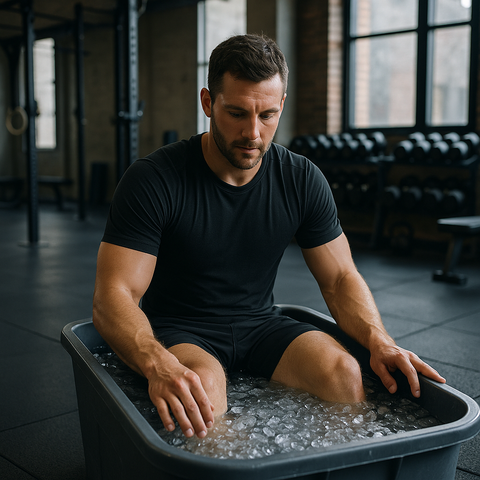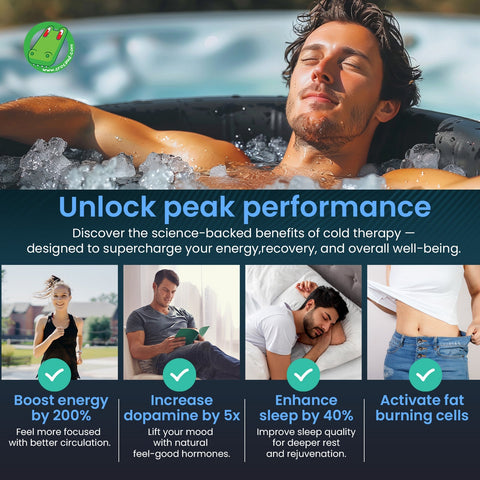Fitness and Injury Recovery Using Ice Baths
Physical fitness and athletic performance demand more than just rigorous training—effective recovery strategies play a pivotal role in helping muscles heal, reducing fatigue, and preventing overuse injuries. Among the various techniques athletes and fitness enthusiasts use, cold water immersion (CWI)—commonly known as the ice bath—has become a go-to method for accelerating recovery and managing inflammation. This article explores how ice baths work, their benefits for injury recovery, best practices, and potential considerations to help you integrate this powerful tool into your fitness regimen.

How Ice Baths Work
When you submerge your body in icy water (typically between 10°C and 15°C or 50°F and 59°F), several physiological responses occur:
-
Vasoconstriction
Cold temperatures cause blood vessels near the skin’s surface to constrict (narrow). This process reduces blood flow to inflamed or damaged tissues, minimizing swelling and edema. -
Reduced Metabolic Activity
Lower tissue temperatures slow down cellular metabolism, which can help limit secondary muscle damage following intense exercise or injury. -
Analgesic Effect
The numbing sensation from cold exposure can decrease pain receptor activity, providing immediate relief from muscle soreness and discomfort. -
Rebound Vasodilation
After exiting the ice bath, blood vessels dilate, increasing blood flow to muscles. This “flushing” effect helps transport nutrients and oxygen to aid tissue repair.
Benefits for Fitness and Injury Recovery
1. Accelerated Muscle Repair
Studies suggest that ice baths can reduce markers of muscle damage—such as creatine kinase—after high-intensity workouts. Faster removal of metabolic waste products supports quicker muscle regeneration.
2. Decreased Delayed-Onset Muscle Soreness (DOMS)
Typical soreness peaking 24–72 hours post-exercise can be mitigated with a timely ice bath, allowing athletes to return to training sooner and with less discomfort.
3. Inflammation Management
For acute injuries (sprains, strains, contusions), the anti-inflammatory effects of cold immersion help control swelling in the initial 24–48 hours, complementing the “RICE” protocol (Rest, Ice, Compression, Elevation).
4. Enhanced Perceived Recovery
Many athletes report feeling more “refreshed” and less fatigued after ice baths, an important psychological boost that can improve motivation and performance consistency.
Best Practices for Ice Bathing
To maximize benefits and minimize risks, follow these guidelines:
-
Temperature & Duration
-
Optimal range: 10°C–15°C (50°F–59°F)
-
Duration: 8–12 minutes for most athletes. Beginners may start with 5–6 minutes and gradually increase.
-
-
Timing
-
Post-Exercise: Begin within 20–30 minutes after strenuous workouts or competition.
-
Acute Injury: Use in the first 48 hours to control inflammation; follow up with compression and gentle movement as tolerated.
-
-
Submersion Level
-
Aim to immerse up to the waist for lower-body benefits; for upper-body recovery or shoulder injuries, you may submerge up to the chest or shoulders.
-
-
Hydration & Warm-Up
-
Hydrate well before and after cold immersion.
-
Perform light dynamic movements (e.g., bodyweight squats, arm swings) pre- and post-ice bath to maintain circulation.
-
-
Frequency
-
After heavy sessions: 2–3 times per week.
-
During injury recovery: Daily or twice daily for acute phases, tapering as inflammation subsides.
-
Potential Risks and Considerations
While ice baths offer notable recovery advantages, they are not without caveats:
-
Overexposure can lead to hypothermia or frostbite; always monitor skin color and sensation.
-
Cardiovascular Stress: Rapid vasoconstriction may raise blood pressure temporarily. Individuals with hypertension or heart conditions should consult a healthcare professional.
-
Blunted Adaptation: Some research indicates that frequent cold therapy might attenuate long-term muscle adaptations (e.g., strength gains) if overused. Ice baths are best reserved for recovery days rather than as a routine after every training session.
Complementary Recovery Strategies
Ice baths work best in tandem with other recovery modalities:
-
Compression Garments: Improve venous return and reduce swelling.
-
Active Recovery: Low-intensity cycling or swimming promotes circulation without additional muscle damage.
-
Nutrition: Adequate protein and antioxidant-rich foods support tissue repair.
-
Sleep & Stress Management: Hormonal balance during sleep is crucial for recovery; mindfulness practices help regulate cortisol.
Practical Tips for Home Use
-
DIY Setup: Fill a bathtub with cold tap water and add bags of ice to reach the target temperature.
-
Use a Thermometer: Ensure accurate monitoring rather than guessing based on feel alone.
-
Set a Timer: Avoid staying in longer than recommended.
-
Have Towels & Warm Clothing Ready: Prepare a cozy environment to warm up immediately afterward—think warm socks, sweatshirts, or blankets.
Conclusion
Ice baths are a proven, accessible method to enhance fitness recovery and aid injury rehabilitation. By leveraging the body’s natural cold-induced responses—vasoconstriction followed by rebound vasodilation—you can reduce inflammation, alleviate soreness, and support faster muscle repair. Like any recovery tool, success lies in proper application: maintaining safe temperatures, respecting recommended durations, and integrating ice baths into a broader recovery plan that includes nutrition, sleep, and active movement.
Whether you are an elite athlete or a weekend warrior, incorporating ice baths judiciously can help you train harder, recover faster, and minimize downtime from injuries. Always listen to your body, consult healthcare professionals when necessary, and balance cooling strategies with your overall training goals for optimal performance and wellness.



